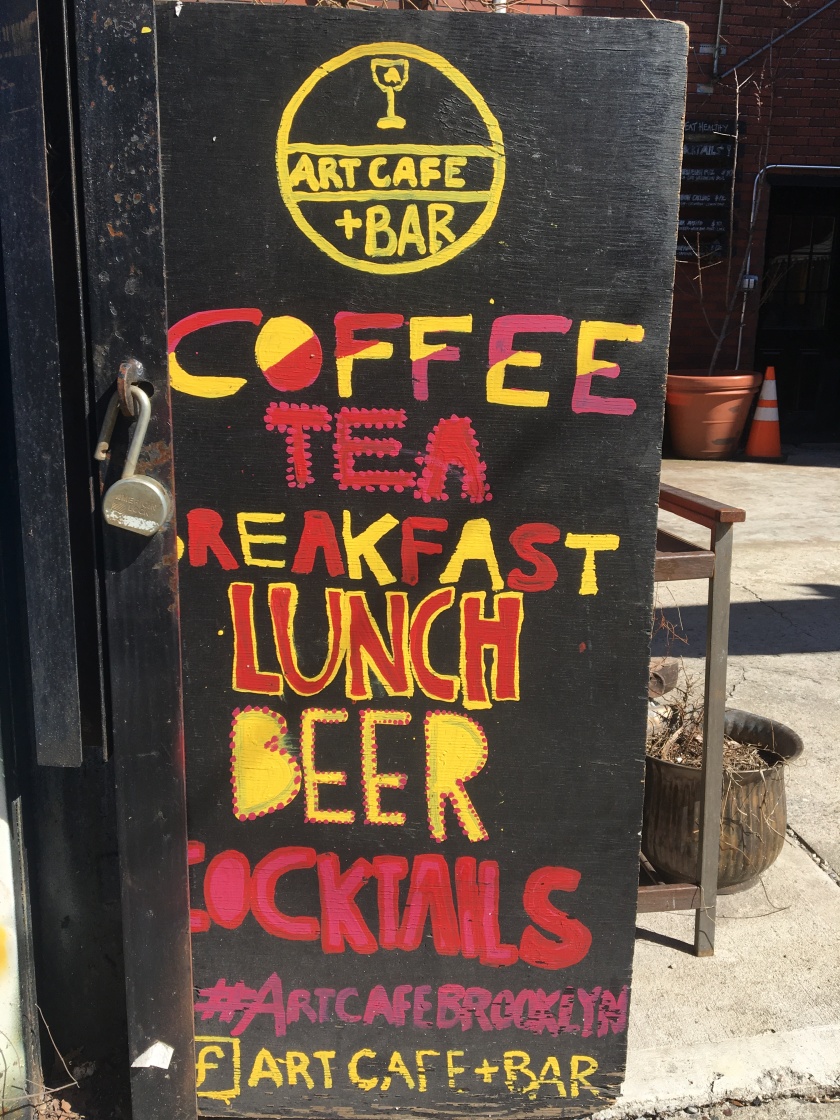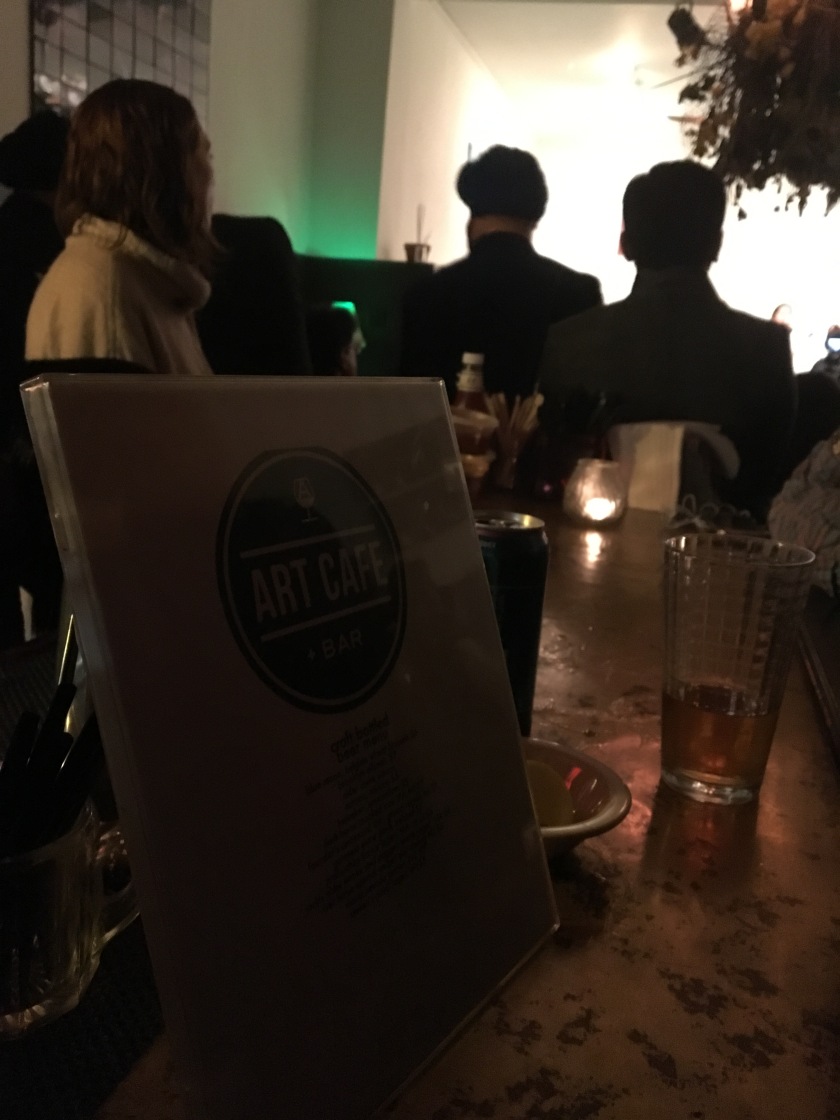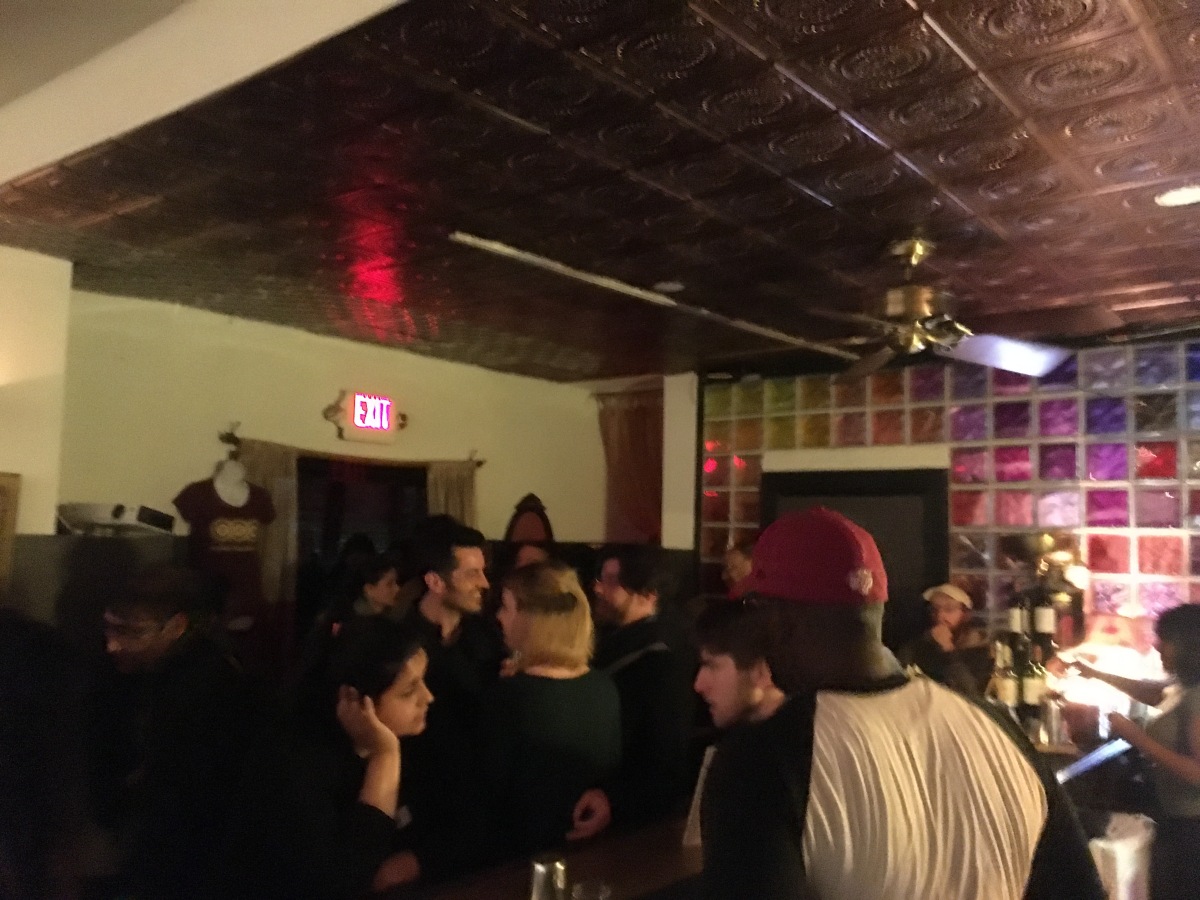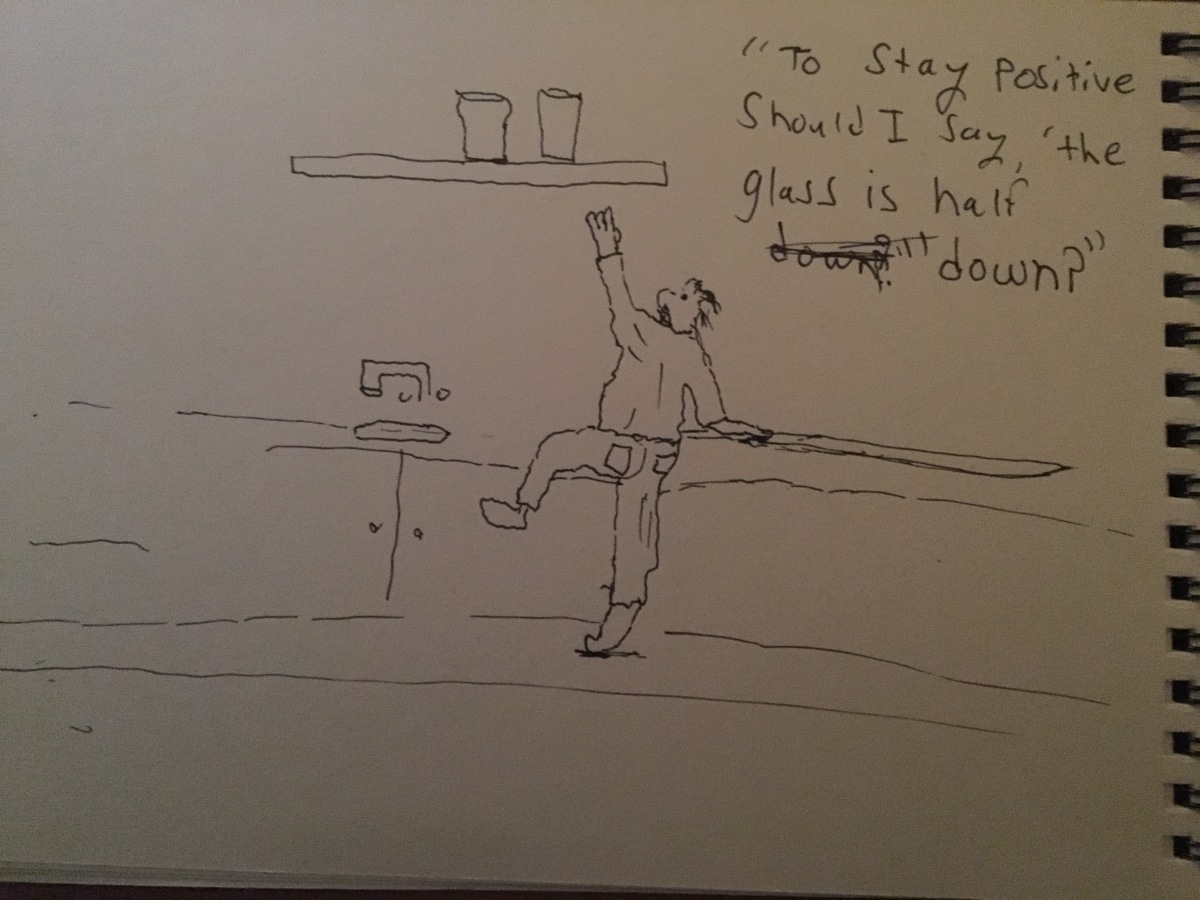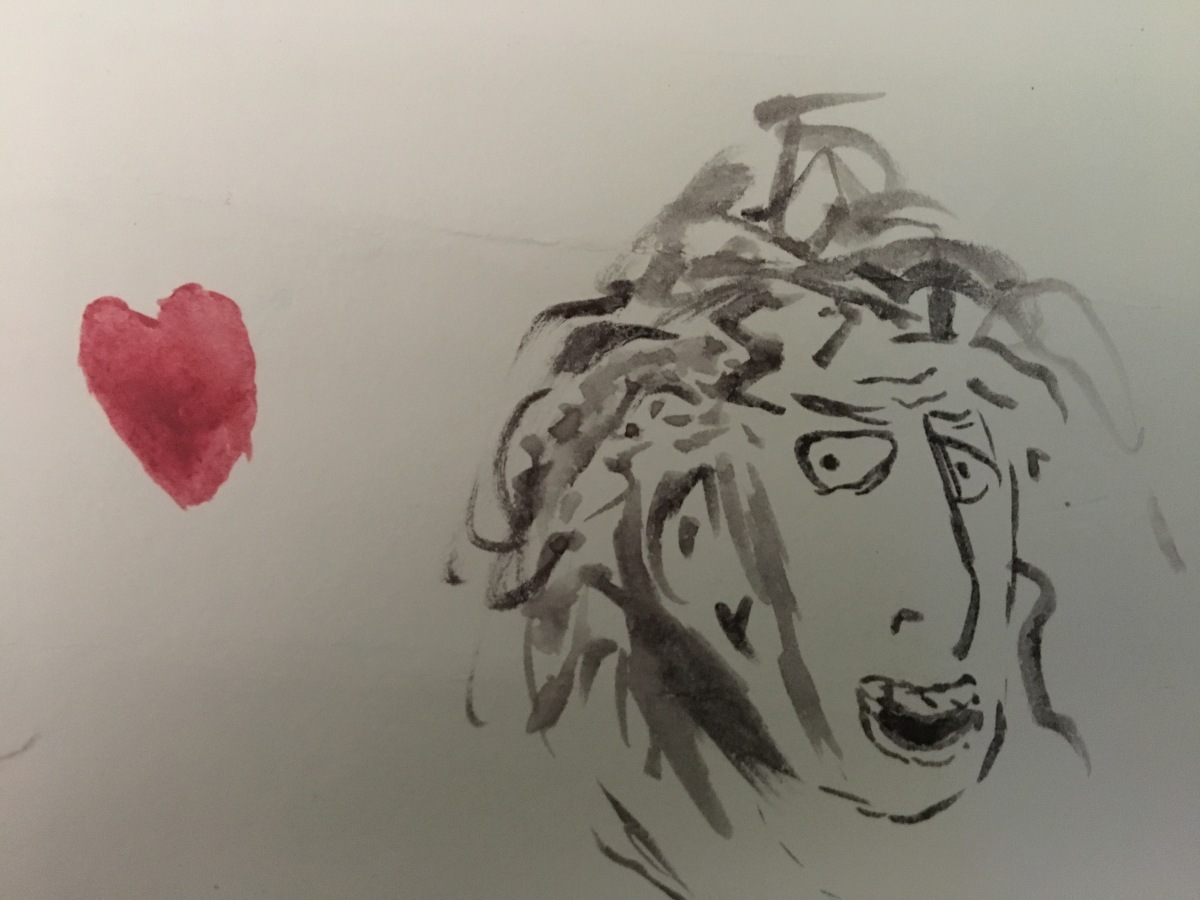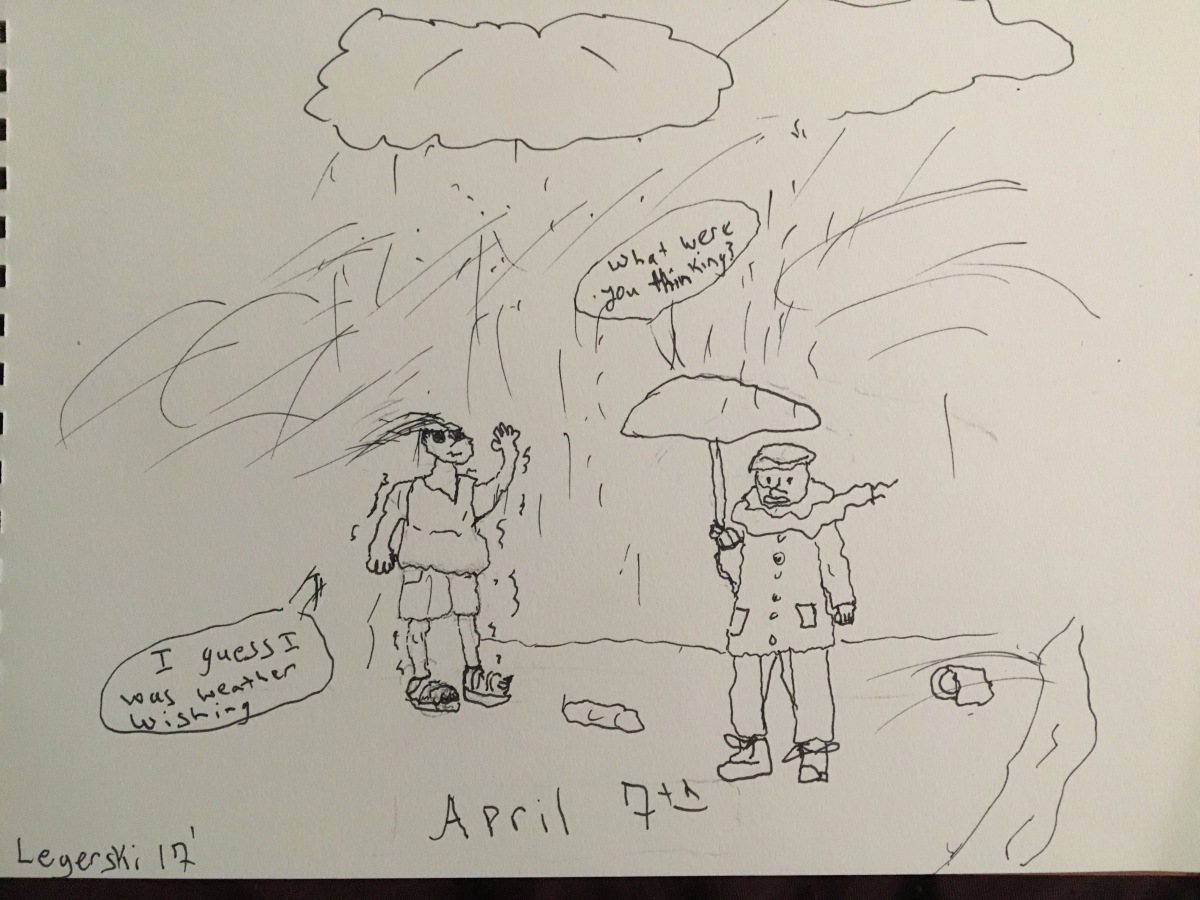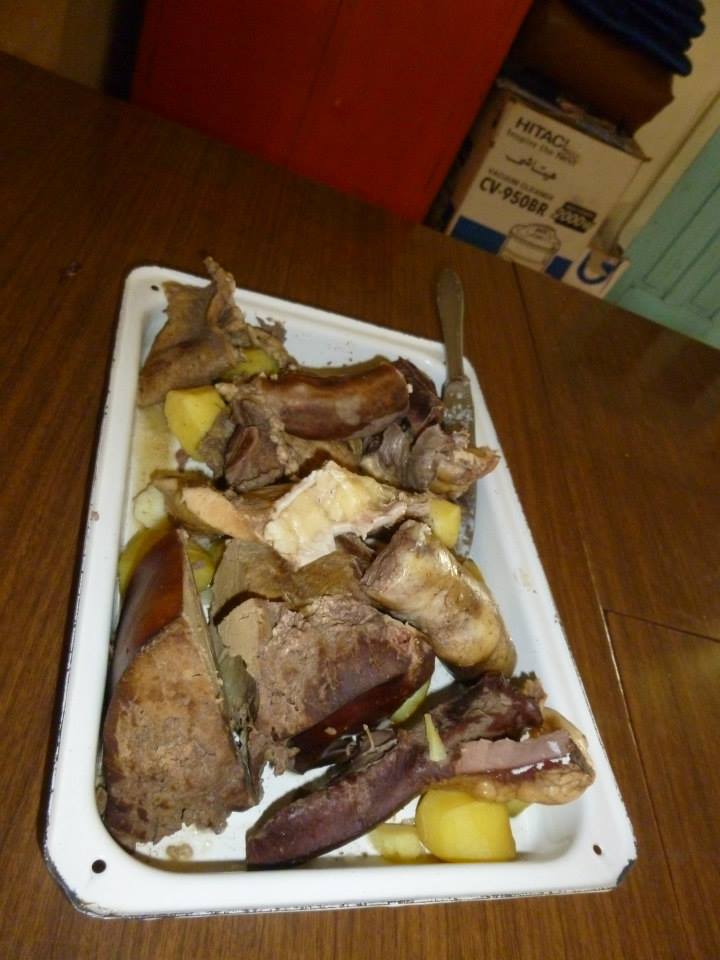In Sainshand, Mongolia, which is in the eastern Gobi Desert, the herders, who are usually men, often show up from the countryside with a truck full of animal carcasses. Inside the unmarked concrete building women separate the meat from the hides. The fur and hide—orange, white, and shaggy—are placed on the sidewalks or piled in the back of trucks. The women inside the concrete buildings sell the meat on counter tops with small signs advertising what the meat is: Camel, Sheep, Goat, Horse, Cow. The “big five” as they are called in Mongolia, which are the five most consumed animals in Mongolia.
Inside the meat market the walls are white and blank. It smells like cold iron from the rotting flesh. In summer, flies populate the air along with the Mongolian language—a language that gives allowance on heavy consonant words and, to an English ear, unique aural waves from tricky tongue placements. These meat markets are magnificently different than American grocery stores or your local deli section. There aren’t rows of plastic wrapped meat pointing towards the customers while assorted into different cuts under cool air and florescent lights. Instead, there are clumps of uncovered meat on cutting boards with yellow and white fat still lodged within the red muscle. There are sometimes just piles of fat, bulbous and cauliflower white. Camel and Horse, by the way, have the least amount of fat. There are also random bones left inside the meat. You might see vertebrae, ribs, or scapulae protruding from the clumps or still in place within the chunk. The animals don’t appear to be sectioned off in individual parts. Cow for example isn’t separated into sirloin, flank, loin etc. The meat appears to be randomly hacked off and thrown on the table. Most Mongolians just care if it’s meat, not what section of meat. There is a lack of grilling, roasting, or broiling meat in Mongolian culture too. Additionally, here in Sainshand at least, if you ask for ground beef, the woman laugh and say they don’t make ground meat.
Each woman butcher has a scale, maybe some butcher paper, and black plastic baggies. If you want to buy meat, you walk up and ask for the desired weight in kilograms. The woman takes out a knife, slices off some meat (you must ask for only red meat if you don’t want fat or bone) and places it on the scale, throws it in a bag. As she hands you the bag, small driblets of red meat are stuck to her hands. She works without gloves. There isn’t hand washing either, just a towel to wipe with, which most of the women share. You make sure to cook the meat thoroughly when you take it home to cook.
The Mongolian herders, who are mostly men outside, stand and socialize on the street, around the trucks and motorbikes and the hides. They are often smoking cigarettes, sometimes sneaking vodka shots from bottles hidden under their jackets and deels, trading information, rubbing the tinny rocks on the cement with their boots as they chat or argue. They almost always have bronze, weathered skin from a lifetime spent outside. They eventually, after getting paid, hop on their bikes and get into their trucks, and takeoff back to the countryside. These herders who sometimes come into town from their isolated countryside homes live off the economy of meat, hair, and milk of these animals.
Besides being a way to make a living for Mongolians, meat, and the animal that becomes meat, has almost a mystical presence in Mongolian culture. Besides being dominate in an average Mongolian’s diet, many Mongolians will believe by eating meat you’ll become healthier and stronger. In winter for example, it’s good to eat horse because horse meat will make you warmer, as some Mongolians claim. The nomadic roots of meat, animals supporting a culture that lived on the move and conquered on the move, still has a powerful importance to the everyday lives of Mongolians today and their diet. A country shaped by harsh and long winters also played a role. When it’s forty-below zero and it’s January, historically, an animal was a Mongolian’s only access to food. Bottom line: because of culture, lifestyle, geography, and history, meat matters in Mongolia.
As a Peace Corps Volunteer working here at a secondary school, living in Sainshand, I didn’t get to see the herders’ lifestyle or where the meat came from. Sainshand is the biggest town in the Dornogobi aimag (think of aimag like a state or province, there are 21 in Mongolia) and is considered as something different than the countryside. There are almost 25,000 to 30,000 people who live here who are teachers, bankers, shop owners, restaurant and hotel workers, railroad employees, or government employees. Sainshand is filled with apartment and municipal buildings, a hospital, a medical college, many paved roads, professionals with university degrees, access to the internet, and a wide variety of food and supply options. The Trans-Siberian railroad comes into Saishand, and also a recently built, paved road that connects to Ulan Bator (about ten hours by train or five by car), but everything else surrounding the area is a semi-desert land full of sand, rock, little vegetation, and distant hills formed by black, sharp, jagged rocks. It’s wall-less, fenceless, barren, and has gigantic empty spaces that evokes images of Mars or Tatootine.
I wanted to go into those empty spaces and visit a herder and see where the meat came from. To visit a herder, I had to travel to the countryside, or as you say in Mongolian, Khuudo (pronounced whoodough). On a Friday night after work, I went with my friend and fellow teacher, Uuriintuya to meet some of her family members who live in a ger (most of the English speaking world calls gers yurts) and who herd livestock for a living. We got into a four-door car and rode into these empty spaces. Uuriintuya’s two-year-old son sat on her lap in the front, and her younger, teenage sister, Delgermaa sat in the back with me as we passed around a bag of arraul (dried milk curd). Mongol tunes about pride, the sky, open steppe bellowed inside a low, powerful Mongolian male’s voice, and Tumee, Uuriintuya’s husband, who drove, rolled down his window and spew out the smoke of the first of many cigarettes. We left the knots of lights that lit up Sainshand and pressed eastward down the paved road, deeper into the countryside. The day faded away and night began.
Uuriintuya’s family members live and herd 132 kilometers (a tad over 82 miles) away from Sainshand, but Tumee and Uuriintuya did not know where it was exactly. They needed the help of Uuriintuya’s aunt and her family. We stopped in their home just off the road, ate buuz (dumplings with mutton), drank milk tea, and piled back in the car. We followed the aunt and uncle’s truck— a rumble of coal sat in the bed—as it bounced, winded through the dirt filled and sandy countryside. We had lost the truck in the night. We drove for nearly an hour when we saw a distant light and turned towards it. It was Uuriintuya’s brother-in-law sitting on a motorcycle, smoking a cigarette in his green deel with a hoodie underneath. Tumee asked where the ger was. The brother-in-law turned the motorcycle on and zipped down the hill. We followed until we reached a set of trucks—one was the aunts and uncles—and cars, an empty corral, and a Mongol ger.
Gers are one room, circular homes traditional to Mongolians. The walls are made with a lattice network of wood, and covered with felt and canvas. The ceiling is made up of around sixty wooden poles that are usually colored orange. Many people live in them, even in Ulan Bator, the capital, there are large districts jumbled together on hills and areas of land like campaign pins assaulted on an entire shirt. About half of the Peace Corps volunteers live in one. They are cheaper than apartments or modern homes, but also more difficult. There are no toilets, for example, or running water, and your heat comes from making a fire primarily using fuel such as dung, wood, or coal. The stove usually sits in the middle, and a sky light of four windows is in the center of the roof, and there is only one door.
Inside this ger there were two beds, a stove, a tin bin full of dung and small shrubs, an erected pipe that poked through the middle and went outside to let out smoke. Blankets and pillows were folded on one side among a desk with a small Buddha on it, and a mirror. Close to the door were pots, pans, cups, chopping board, silverware. A carpet laid opposite of the door, and a phone and a TV sat on small table at the head of one bed. Solar panels powered the phone, TV, and the light that dangled from the ceiling. The panels were poked outside in the ground as was a small satellite.
After a cup of milk tea, Tumee, Uuriintuya’s husband and the brother-in-law, Batmunkh asked me to join them outside. Tumee, who worked with the train system in Sainshand, had a young, pale face, a small gut, big cheeks, a soft voice, and wore a black leather jacket and slick, brown, pointed boots. Batmunkh, who lived here and herded, had copper colored skin, a face in its twenties, and an athletic body under his many layers of clothes that kept him warm while he sat on his motorcycle and watched the herds at night. Outside of the ger the motorcycle’s light pointed towards a blank piece of powdered, clumpy dirt that was cool and littered with dried, raisin-like goat and sheep droppings.
Batmunkh waddled over from the darkness with a sheep between his legs. He got into the light, flipped the sheep, and whipped it to the ground, belly up. Tumee grabbed the hind legs. Batmunkh sprang out his knife—he sharpened it on a rock a moment before—and cut a vertical crevice down the sheep’s belly, just big enough for a hand. He rolled his sleeve and plunged his hand inside and searched. The sheep had its eyes open and turned its head back and forth, not a sound yet, almost unaware a foreign, sentient thing searching for an artery to stop its heart. Batmunkh brought his hand out, which was covered in slime, and grunted. He went back in. Within seconds the sheep made a yelp. Batmunkh lightly put his knee on the sheep’s head while Tumee held the legs that quivered slightly, and soon the sheep was gone. Tumee placed a cigarette in the Batmunkh’s mouth, flicked his lighter, and held the flame until Batmunkh puffed out smoke.
They would kill six more sheep and a goat, but before that happened we moved the herd into a corral, which was small, built with wooden panels. Window screen and chicken wire covered some of the panels, and many were loopy, slanted, especially near the gate. They turned on truck lights that cut through the rising dust. There must have been over a hundred goats, mixed with some sheep, but mostly goats. We hollered, got behind and packed them into the corral—a pile of horns, American football shaped iris, tongues, red hides, snouts. Uuriintuya’s mother, Solongo and the Batmunkh swam through the goats and sheep and picked the ones they wanted to slaughter and use. When we were finished, and the vehicle lights went out, I saw the stars. We were 60 kilometers from the nearest lights of a soum, and on this cold night, there was only a small, boomerang moon, and no clouds. The planets and stars seasoned the black sky and filled it with a mesmerizing spill of white dots.
Each carcass was brought inside the ger and dismantled, two at a time. The men smoked cigarettes and sliced with knives. They took out the organs by the handfuls: stuffed bubbles, strings, bags, puzzle pieces coated in liquid, blood. They even used bowls to scoop up as much blood as possible with the bowls edge scraping against the rips and spine. The organs were dumped into five-inch thick pans, and other pots, and then given to the women. The stacked, piled organs in the pots and pans were a peachy, maroon, gray, green, and white, wet blob that looked like a supersized, colorful blast of snot.
Uuriintuya’s little sister, Delgermaa hauled the bulged pink sacs of the stomach outside. When she came back inside, the sacs were flattened like exploded rugby balls, and tossed into the pan with the other organs. Solongo and the other woman pulled up the intestines and squeezed out the innards into an empty pan, which, with every drop, got browner, chunkier, and soupier.
After the intestines were cleared, they coiled them, and made a mini-rope of intestine, and piled them to the side. Later they cleaned the intestines again by pouring water inside them, causing the tubes to bubble, and then dumped the water. Delgermaa came in after the fourth stomach and complained because her nose itched. Her hands were covered in slime and shit. Her wrist wouldn’t do the job. She asked for someone to itch it and stomped her foot. The brother-in-law said, “You have to learn how to blow your nose without your hands.” He pantomimed swinging his head to the side and puffing out a snot rocket, with his hands hung on the side. The men meanwhile removed the skin and fur from the body of the sheep. The skin underneath was boiled-egg white, milky, smooth tissue. They cut off the hooves, the head. One man doing the job wore a Jordan shirt, and had a broad back and chest, and sweated mightily over the work. He wiped his face with a towel, breathed, and wiggled a sheep head away from the body until it snapped off. He threw a small cloth over it.
On average, a herder family, like this one, will get about three dollars per kilogram of sheep or goat meat. They will get anywhere from ten to twenty dollars per sheep skin, or goat skin. They often will collect the meat and skins and take them to Sainshand or the nearest soum to sell. Some goats will be hauled alive in the back of trucks and killed, butchered there, and in that case, the skins will be piled on the sidewalk until business is finished.
Uuriintuya, my coworker has not lived in a ger for a long time. She lives in Sainshand now, with Tumee, in a concrete, one-floor house. She says her family members, her older sister, father, and mother do well as herders and like it out here. How long will Mongolia have families like this? I suspect as long as there’s an economy in it. As long as younger generations say yes to this lifestyle, and resist the movement to a more modern life in places like Sainshand, or jobs in the mining industry. The spot we’re in now is this families’ winter spot. They move the ger about five times a year chasing Dornogobi’s grass, which is more difficult to chase than other herder families in Mongolia because of water and grass conditions in the Gobi Desert. On average, they move sixty-to-ninety kilometers every time they collapse the ger, and pile the wood, felt, stove, and belongings onto trucks, or on horseback, and move the herds.
Solongo began to cook the organs on-top of the stove. She brought the fire to life with a match thrown into a pile of dung and thin sticks. The flames danced between the holes on the sides. The pan soon bubbled and jiggled the kidneys, tongue, lungs, stomach, intestines (which were, after cleaning, refilled with blood, onion, salt, and flour and wrapped up in a knot with an unfilled end of intestine), liver, and heart. Solongo covered them with a lid. Two more sheep carcasses were brought in and the men eviscerated the bodies, removed the skins, and the women cleaned the organs, again.
On the other side of the ger two first graders laughed at a pirate cartoon that played on the TV. One of them farted and they both laughed harder and pointed at each other. They both said, “Chi, Chi!” “You, You!” Uuriintuya lay with her baby, who was wrapped in a blanket, on the floor and talked to him in a lilt, motherly voice. An older family member lay on a bed, bent his knees, stared at the ceiling, and sipped milk tea. This circular space of maybe thirty feet had fourteen people in it at this time, and in this space people worked, cooked, played, rested, and parented.
We eventually ate the meat. After boiling in the pans, the organs and meat became black, gray, soft, and tender. The family gathered around and grabbed and cut off chunks of meat, square bits, clumps, one piece after another with the same automation you may see people eating popcorn at movie theaters. The dense and dank smell of mutton filled the home. The family gathered. They ate with what American would call, disorder and loudness. Mouths were open. Belches were released. Please and Thank Yous didn’t exist. Napkins were crumbled nearby on beds. We didn’t sit around a table, or have a formal time frame for eating. People ate off and on. They ate standing, crouching, and sitting on the floor, or on the bed. The ger filled with mouth chomps and tears of muscle, wipes of sleeves. After living in Mongolia for a longer than a year, I came to feel this eating behavior to be freer. Less structured and less worried. More connected and relaxed.
Smoke scribbled out of the pan of the boiled parts of tubed intestines, masses of heart, kidneys, muscle, and glistening cubes of fat. The family members rotated visits to the silver pan and used only a knife for silverware that stayed in the pan to cut off bits and pieces. This food, this meat, as most, if not all meat from the big five animals, comes from herder families like this one, who raise the animals, kill the animals, prepare the animals, and who sell and eat them. Mongolians hold animals and meat as a pillared symbol of identity, of what sustains them not only as food but also economically, and to some extent socially, and also atavistically. We ate this meat now that was perhaps an hour ago a breathing, eating, roaming sheep. Mongolians have been eating meat like this for hundreds of years. Tradition kept it boiled, cooked over fire, unseasoned, and every piece of the animal eaten, guts and all. It brought this family together and contributed to the welfare of the family. Meat, animals, herding, glowed in the Mongolian cultural psyche, in what I imagine, within each Mongolian here quietly eating this fresh mutton inside this ger.
At nearly two o’ clock in the morning we stuffed the car with raw sheep and skins, poured cow milk into empty water bottles, moved the spare tire to the backseat with me, Delgermaa, Solongo, and another woman and her child coming back from the countryside. Tumee drove us on dirt for an hour before we reached the asphalt road. Eventually Sainshand’s fixed, city lights appeared: yellow dots of light scattered across the horizon, knotted within the Mongolian countryside.
By Tucker Legerski
Photo Credit: Jake Borst
